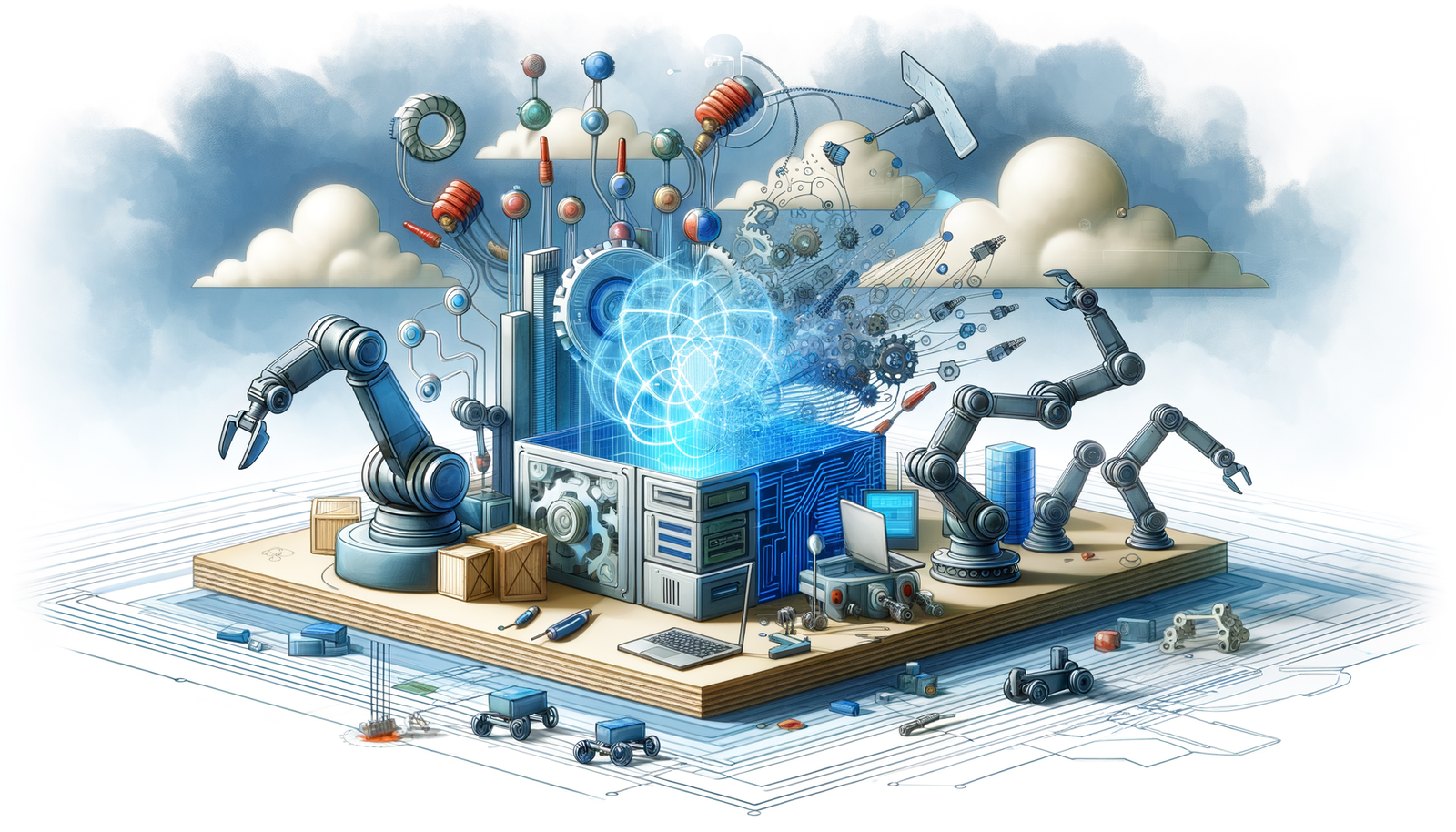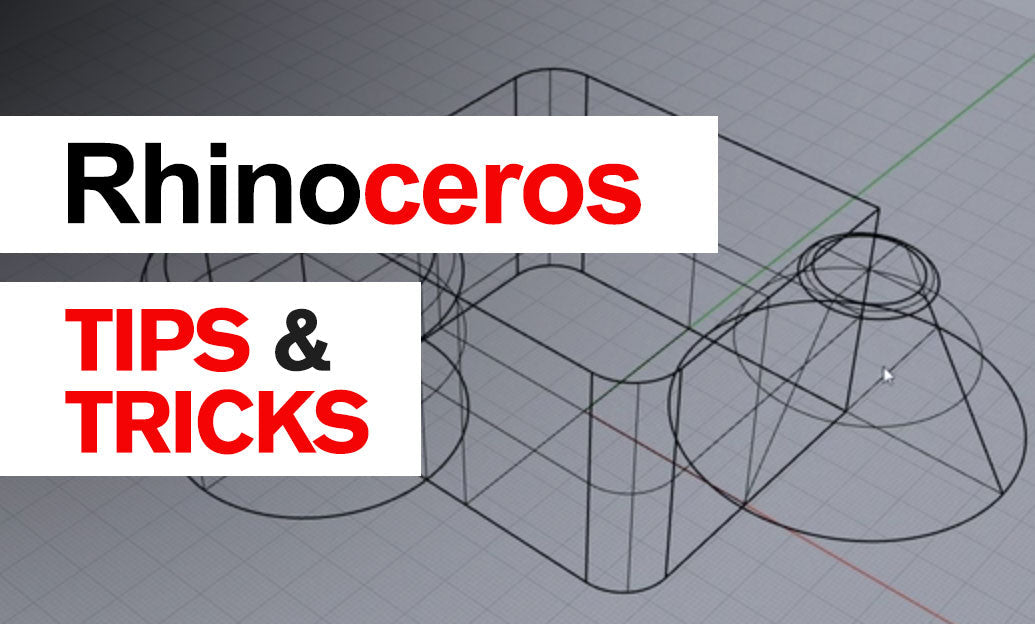Your Cart is Empty
Customer Testimonials
-
"Great customer service. The folks at Novedge were super helpful in navigating a somewhat complicated order including software upgrades and serial numbers in various stages of inactivity. They were friendly and helpful throughout the process.."
Ruben Ruckmark
"Quick & very helpful. We have been using Novedge for years and are very happy with their quick service when we need to make a purchase and excellent support resolving any issues."
Will Woodson
"Scott is the best. He reminds me about subscriptions dates, guides me in the correct direction for updates. He always responds promptly to me. He is literally the reason I continue to work with Novedge and will do so in the future."
Edward Mchugh
"Calvin Lok is “the man”. After my purchase of Sketchup 2021, he called me and provided step-by-step instructions to ease me through difficulties I was having with the setup of my new software."
Mike Borzage
Revolutionizing Design: The Synergy of Robotics and Software Integration
February 05, 2025 8 min read


The integration of robotics with design software has ushered in a new era of innovation, transforming the way designers conceptualize and realize their ideas. This synergy enables more efficient workflows, greater precision, and opens up possibilities that were once unattainable. By exploring the intersection of these technologies, we can better understand how they are reshaping various design industries and what the future holds for this dynamic partnership.
Defining Robotics in the Context of Design
Robotics, in the realm of design, refers to the use of programmable machines to perform tasks traditionally carried out by humans. In various design industries, robots are employed to automate processes, enhance precision, and execute complex operations with ease. From architectural modeling to automotive design, robotics plays a pivotal role in bringing digital concepts to physical reality. The types of robots commonly integrated with design software include industrial robotic arms for manufacturing, autonomous drones for surveying and mapping, and collaborative robots, or cobots, that work alongside designers to streamline workflows.
These robots are adept at handling repetitive tasks, allowing designers to focus on creativity and innovation. In the fashion industry, for example, robots can cut fabrics with high precision, while in product design, they assemble prototypes with minimal error. The integration of robotics in design encapsulates not just the physical machines but also the software that controls them, creating a seamless bridge between digital models and tangible products. This integration significantly enhances efficiency and opens up new avenues for complex design implementations.
Evolution of Design Software with Robotics Integration
The journey of integrating robotics with design software has been marked by significant milestones that have transformed the design landscape. Historically, the adoption of robotics in design began with simple automation tools that assisted in basic tasks. As technology advanced, so did the complexity and capability of both robots and design software. The introduction of Computer-Aided Design (CAD) systems in the late 20th century laid the groundwork for digital modeling, which robots could then interpret and execute.
Key milestones include the development of robotic milling machines that sculpted materials based on digital inputs, and the advent of 3D printing technologies that allowed for additive manufacturing directly from design software outputs. The evolution continued with the integration of sensors and feedback systems, enabling robots to adjust their actions in real-time based on data. This historical progression has led to a stage where design software and robotics are not just complementary but interdependent, pushing the boundaries of what is possible in design and fabrication.
Current Trends Driving the Intersection
Today, several trends are accelerating the convergence of robotics and design software. Advancements in artificial intelligence (AI) and machine learning have empowered robots to learn from data and improve their performance over time. This has significant implications for design, as robots can now adapt to complex tasks and make decisions that enhance the quality and efficiency of the output. The rise of collaborative robots, or cobots, is another trend reshaping design workflows. Cobots are designed to work safely alongside humans, sharing the workspace and tasks, which enhances productivity and allows for more flexible design processes.
Additionally, there is a growing emphasis on customization and on-demand manufacturing. Robotics integrated with advanced design software enables the production of unique products tailored to individual specifications without the need for extensive retooling or manual intervention. This trend is particularly evident in industries like consumer electronics and personalized medical devices. By leveraging AI and machine learning, robots can interpret complex design parameters and execute them with high precision, making the intersection of these technologies a cornerstone of modern design practices.
Robotic Process Automation (RPA) in Design
Robotic Process Automation (RPA) refers to the use of software robots or "bots" to automate repetitive and rule-based tasks traditionally performed by humans. In the context of design, RPA can handle mundane tasks such as data entry, file management, and routine calculations, allowing designers to focus on more creative and strategic aspects of their work. Automating these tasks not only enhances efficiency but also reduces the likelihood of human error, leading to more accurate and reliable design outcomes.
The benefits of RPA in design include:
- Improved Productivity: Automating routine tasks frees up valuable time for designers to engage in creative problem-solving.
- Cost Reduction: Automation reduces labor costs associated with repetitive tasks.
- Consistency: Bots perform tasks the same way every time, ensuring uniformity across projects.
By integrating RPA into design workflows, organizations can streamline processes, improve turnaround times, and enhance overall project quality. This integration is particularly beneficial in large-scale projects where efficiency and accuracy are paramount.
3D Modeling and Robotic Fabrication
The interplay between 3D modeling and robotic fabrication represents a significant leap forward in design and manufacturing. Designers create intricate digital models using advanced software, which are then directly translated into physical objects through robotic fabrication methods such as 3D printing, CNC machining, and robotic assembly. This seamless transition from digital to physical reduces the time and resources required to produce prototypes and final products, enabling rapid iteration and innovation.
Tools and software that facilitate this process include parametric modeling programs like Rhino and Grasshopper, which allow for complex geometries to be designed and modified quickly. Robotics software platforms provide the necessary code and commands to instruct robots in fabricating these designs accurately. The integration of these tools results in the ability to produce complex structures that would be difficult or impossible to create manually. This synergy not only enhances fabrication efficiency but also expands the creative possibilities available to designers.
Interfacing Design Software with Robotic Systems
Effective communication between design software and robotic systems is crucial for successful integration. This interfacing is achieved through Application Programming Interfaces (APIs) and middleware solutions that act as translators between the software and hardware components. APIs allow for the customization and extension of software capabilities, enabling the design software to send precise instructions to robotic systems. Middleware solutions manage data exchange and process coordination, ensuring that both systems operate in sync.
Standard protocols, such as ROS (Robot Operating System) and OPC UA (Open Platform Communications Unified Architecture), provide frameworks for this communication. These protocols establish common languages and formats for data exchange, facilitating interoperability between different software and robotic platforms. By adhering to these standards, designers can integrate diverse systems, leading to more flexible and scalable solutions. The use of APIs and standardized protocols enhances the ability to customize robotic operations based on specific design requirements, ultimately improving efficiency and effectiveness in the design process.
Advantages of Combining Robotics with Design Software
The fusion of robotics with design software offers numerous benefits that can significantly enhance the design process. One of the primary advantages is increased efficiency and productivity. Robots can operate continuously without fatigue, handling tasks that would be time-consuming or labor-intensive for humans. This allows projects to be completed faster and frees up designers to focus on more strategic and creative activities.
Another significant benefit is enhancing creativity through the automation of mundane tasks. By offloading repetitive or monotonous tasks to robots, designers can devote more mental energy to innovation and problem-solving. Additionally, robots provide improved accuracy and consistency in designs. They execute tasks with high precision, reducing errors and ensuring that each iteration of a design meets exact specifications. This level of precision is particularly valuable in fields where even minor deviations can have significant consequences, such as aerospace or biomedical engineering.
Overall, the integration leads to:
- Higher Quality Outputs: Precise execution results in superior end products.
- Resource Optimization: Efficient use of materials and time reduces waste and costs.
- Competitive Advantage: Organizations adopting these technologies can outperform those relying on traditional methods.
Challenges and Considerations
Despite the clear advantages, integrating robotics with design software presents several challenges. Technical barriers can hinder seamless integration, such as incompatibility between different software platforms or difficulty in programming robots to interpret complex design data accurately. Overcoming these barriers often requires significant investment in custom solutions or middleware, which can be both time-consuming and costly.
Cost implications are a major consideration for businesses and designers. The initial investment in robotic systems and the necessary software can be substantial. Small and medium-sized enterprises may find it challenging to justify these costs without a clear and immediate return on investment. Furthermore, there is often a skill gap in the workforce. Operating advanced robotics and integrating them with design software requires specialized training. Designers may need to acquire new skills in programming and robotics, and organizations may need to invest in professional development or hire specialized staff to bridge this gap.
Addressing these challenges involves careful planning and consideration of the long-term benefits. Businesses must weigh the upfront costs against the potential for increased efficiency, productivity, and competitiveness. Investing in training and development is essential to ensure that staff can effectively leverage these technologies.
Emerging Trends in Robotics-Design Integration
The future of robotics-design integration is being shaped by several emerging trends that promise to further revolutionize the industry. Augmented Reality (AR) and Virtual Reality (VR) are becoming increasingly important tools in design. These technologies allow designers to visualize and interact with their creations in immersive environments. By integrating AR and VR with robotics, designers can simulate and manipulate robotic actions in real-time, leading to more intuitive and efficient design processes.
Smart materials and adaptive design systems are also at the forefront of innovation. These materials can change their properties in response to external stimuli, such as temperature or pressure. When combined with robotics and advanced design software, it becomes possible to create structures that can adapt to their environment or usage conditions. This opens up new possibilities in fields like architecture, where buildings could adjust to optimize energy efficiency, or in product design, where items could provide customized experiences to users.
These trends highlight a move towards more intelligent and responsive design systems, where the boundaries between digital and physical, and static and dynamic, are increasingly blurred.
Potential Impact on Various Design Disciplines
The integration of robotics and design software is set to have profound impacts across multiple design disciplines. In architecture, the ability to fabricate complex structures directly from digital models enables the creation of innovative forms and sustainable designs. Robots can construct buildings with precision, reducing material waste and allowing for new architectural expressions. In industrial design and product development, robotics facilitates rapid prototyping and customization, making it possible to produce tailored products on demand.
Customized and on-demand manufacturing becomes more feasible as robotics allows for flexible production lines that can switch between different products without significant downtime or reconfiguration. This level of flexibility is particularly beneficial for small batch production or personalized products. The impact extends to fields like automotive design, where robots can assemble vehicles with high precision, and to fashion design, where automated cutting and sewing processes can produce garments tailored to individual body measurements.
Overall, the integration enhances the ability of designers to innovate, respond to market demands quickly, and deliver products and structures that are both advanced and aligned with the specific needs of users.
Predictions for the Next Decade
Looking ahead, we can anticipate several developments in the next decade as robotics and design software become even more intertwined. One significant evolution will be the rise of intelligent design assistants powered by AI. These assistants will be capable of understanding design intent, suggesting improvements, and even autonomously creating design variations. This will further augment the designer's capabilities, leading to more sophisticated and optimized outcomes.
We can also expect greater accessibility and democratization of advanced design tools. As technologies become more affordable and user-friendly, they will become available to a broader range of designers, including those in small businesses or independent practitioners. This democratization will spur innovation and competition, leading to a richer and more diverse design landscape.
Additionally, advancements in connectivity and data sharing will lead to more collaborative and integrated design ecosystems. Designers, robots, and software systems will work together seamlessly, regardless of physical location. This interconnectedness will facilitate global collaboration, faster innovation cycles, and more responsive design processes that can adapt quickly to changing needs and technologies.
Conclusion
The intersection of robotics and design software represents a transformative shift in how designers approach their work. By automating routine tasks, enhancing precision, and enabling the creation of complex structures, robotics integration empowers designers to push the boundaries of creativity and efficiency. While challenges such as technical integration and cost remain, the ongoing advancements in technology promise a future where robotics and design software work hand-in-hand to drive innovation across various industries. Embracing this synergy will be crucial for designers aiming to stay at the forefront of their fields and deliver groundbreaking solutions.
Also in Design News

Rhino 3D Tip: Rhino to Real‑Time Engines: Clean Models, Optimized Meshes, Reliable Exports
December 07, 2025 2 min read
Read More
Cinema 4D Tip: Constraint-Based Animation with PSR, Parent, and Aim
December 07, 2025 2 min read
Read More
V-Ray Tip: Proximity Dirt and Wear Masks with VRayDistanceTex
December 07, 2025 2 min read
Read MoreSubscribe
Sign up to get the latest on sales, new releases and more …


